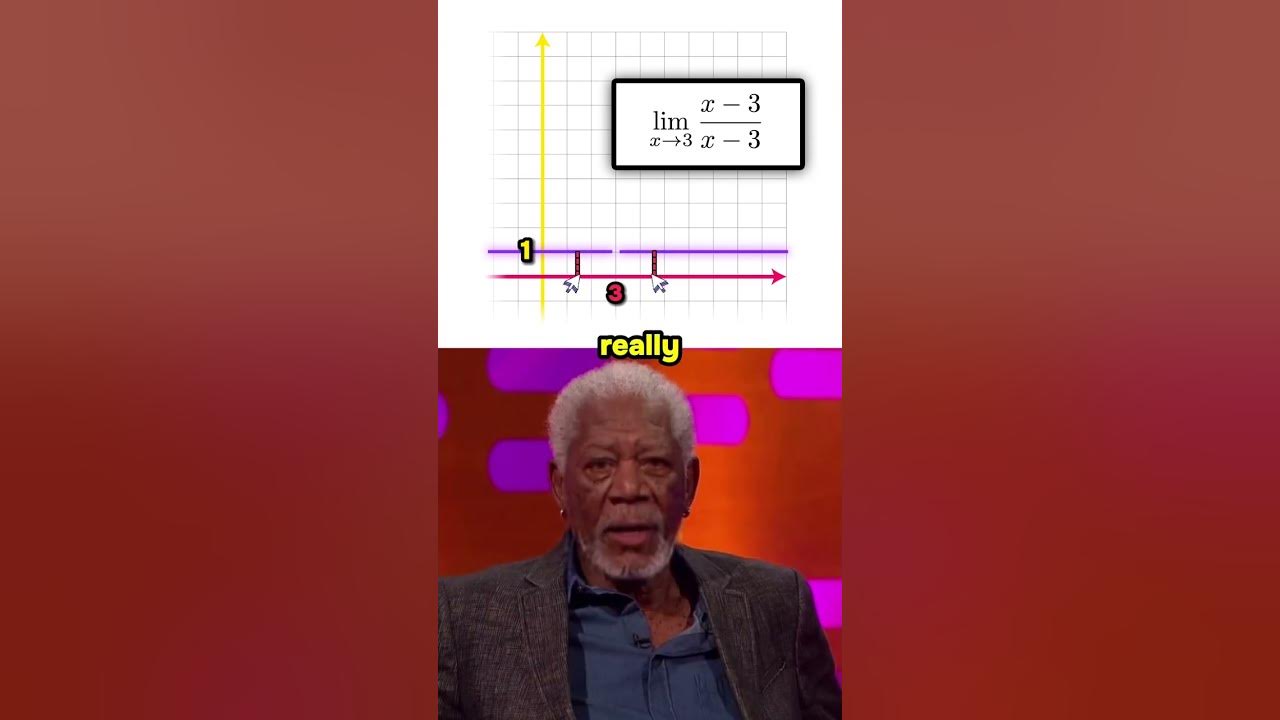Bentuk 0/0 | Bentuk Tak Tentu dan Integral Tak Wajar (Part 1) | Kalkulus
Summary
TLDRIn this video, the topic of indeterminate forms and improper integrals is explored, with a focus on common forms like 0/0, ∞/∞, and 0 * ∞. The host introduces the concept of L'Hopital's Rule as a solution to such indeterminate limits, using examples like the limit of sin(x)/x as x approaches 0. The video also discusses the geometric interpretation of these limits and how L'Hopital's Rule simplifies the evaluation process. The tutorial aims to help viewers understand these challenging concepts in calculus through clear explanations and practical methods.
Takeaways
- 😀 Indeterminate forms in calculus are expressions that cannot be directly evaluated, such as 0/0, ∞/∞, or 0 * ∞.
- 😀 An indeterminate form occurs when both the numerator and denominator approach conflicting limits, leading to uncertainty.
- 😀 The limit of sin(x)/x as x approaches 0 is a classic example of an indeterminate form (0/0), which can be resolved using specific methods.
- 😀 L'Hopital's Rule is a key method to solve indeterminate forms, allowing you to take the derivatives of the numerator and denominator.
- 😀 The limit of sin(x)/x as x approaches 0 can be calculated by applying L'Hopital's Rule, resulting in a limit of 1.
- 😀 The geometric approach to understanding limits involves comparing the graphs of functions near the point of interest to find the limit.
- 😀 In the case of sin(x)/x, the graphs of y = sin(x) and y = x become very close to each other near x = 0, resembling straight lines.
- 😀 The slope of the straight-line approximations to these graphs near x = 0 corresponds to the derivatives of the functions.
- 😀 L'Hopital's Rule works by transforming the limit of a quotient of functions into the limit of their derivatives, simplifying evaluation.
- 😀 Understanding and applying L'Hopital's Rule can be useful for solving other common indeterminate forms in calculus, like ∞/∞ or 0 * ∞.
Q & A
What are indeterminate forms in calculus?
-Indeterminate forms occur when a limit results in an ambiguous outcome, such as 0/0, ∞/∞, or other similar forms. These forms require special techniques to resolve because they don't give a clear result on their own.
What are some common examples of indeterminate forms?
-Common examples of indeterminate forms include 0/0, ∞/∞, 0 × ∞, and 1^∞. Each of these requires specific techniques, such as L'Hôpital's Rule, to determine the limit.
What is L'Hôpital’s Rule and when is it applied?
-L'Hôpital's Rule is a method used to evaluate limits of indeterminate forms, like 0/0 or ∞/∞. It states that the limit of a ratio can be found by differentiating the numerator and denominator separately and then calculating the limit of their ratio.
How does L'Hôpital’s Rule help in solving indeterminate limits?
-L'Hôpital’s Rule helps by converting the original indeterminate form into a form that can be evaluated. By taking the derivative of the numerator and denominator, it often transforms the problem into a solvable limit.
What is the limit of sin(x)/x as x approaches 0?
-The limit of sin(x)/x as x approaches 0 is 1. This is a standard result in calculus and can be found using L'Hôpital's Rule or geometric methods.
Why is sin(x)/x considered an indeterminate form at x = 0?
-At x = 0, sin(x) and x both approach 0, creating the form 0/0. This is an indeterminate form because it is unclear whether the ratio will approach a specific value, so additional techniques, like L'Hôpital's Rule, are used to evaluate the limit.
Can you explain the geometric justification for L'Hôpital’s Rule?
-Geometrically, as x approaches 0, the curves of sin(x) and x both become linear. By zooming in near x = 0, the curves behave like straight lines, and their ratio can be approximated by the ratio of their derivatives. This justifies the application of L'Hôpital’s Rule.
How do you apply L'Hôpital’s Rule to the limit of sin(x)/x as x approaches 0?
-To apply L'Hôpital’s Rule, differentiate the numerator (sin(x)) and denominator (x). The derivative of sin(x) is cos(x), and the derivative of x is 1. So, the limit becomes the limit of cos(x)/1 as x approaches 0, which equals 1.
What does it mean for a function to be in an indeterminate form?
-A function is in an indeterminate form when its limit cannot be directly determined from its expression. This happens when substituting the value of x leads to ambiguous or undefined results, like 0/0 or ∞/∞.
Is L'Hôpital’s Rule always applicable to indeterminate forms?
-L'Hôpital’s Rule is only applicable to limits that result in 0/0 or ∞/∞ indeterminate forms. If the form is not indeterminate or can be directly evaluated, the rule is not needed.
Outlines

This section is available to paid users only. Please upgrade to access this part.
Upgrade NowMindmap

This section is available to paid users only. Please upgrade to access this part.
Upgrade NowKeywords

This section is available to paid users only. Please upgrade to access this part.
Upgrade NowHighlights

This section is available to paid users only. Please upgrade to access this part.
Upgrade NowTranscripts

This section is available to paid users only. Please upgrade to access this part.
Upgrade NowBrowse More Related Video
5.0 / 5 (0 votes)





